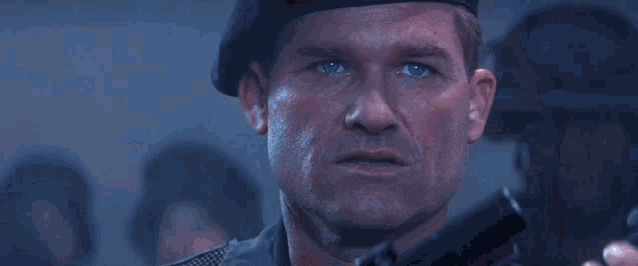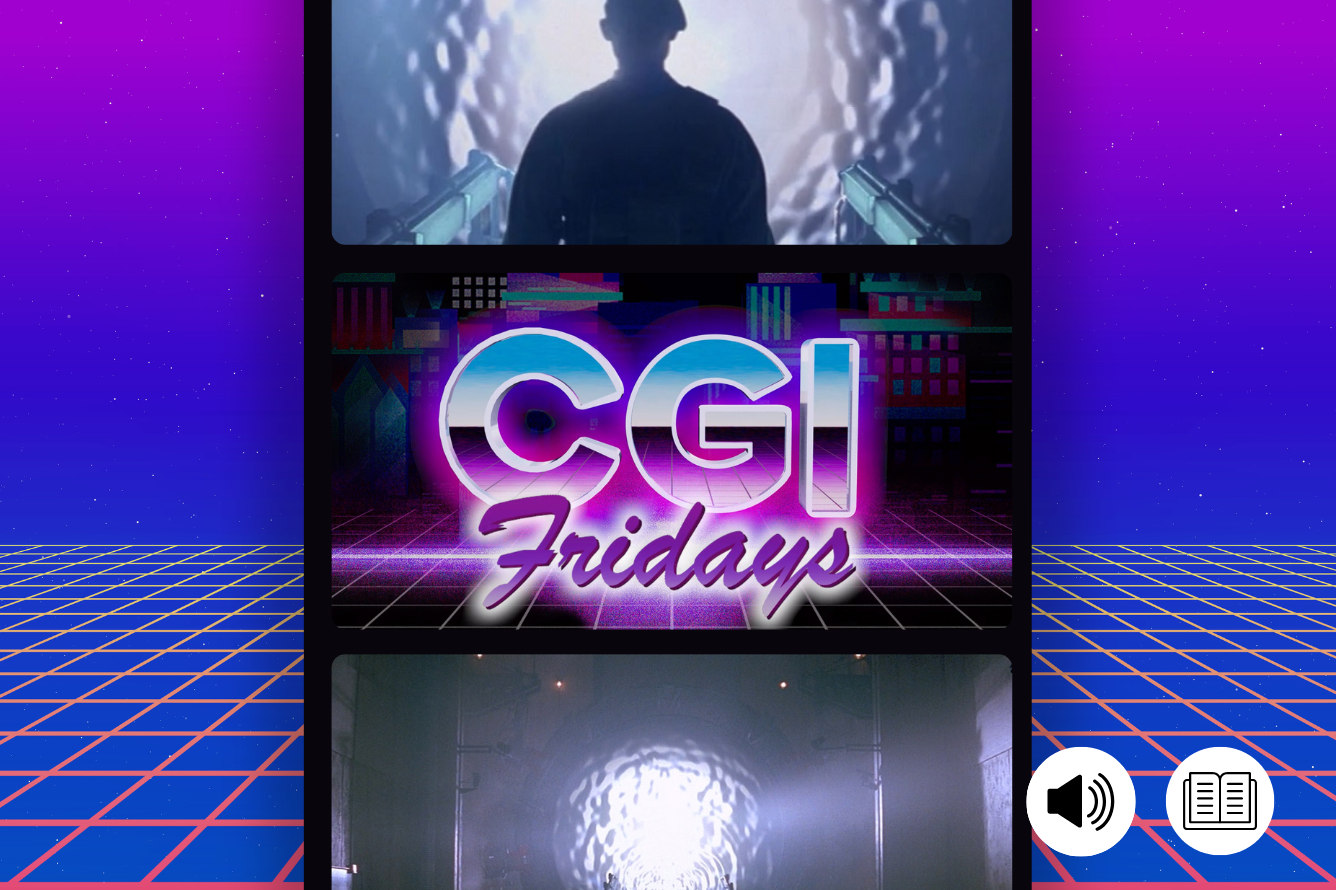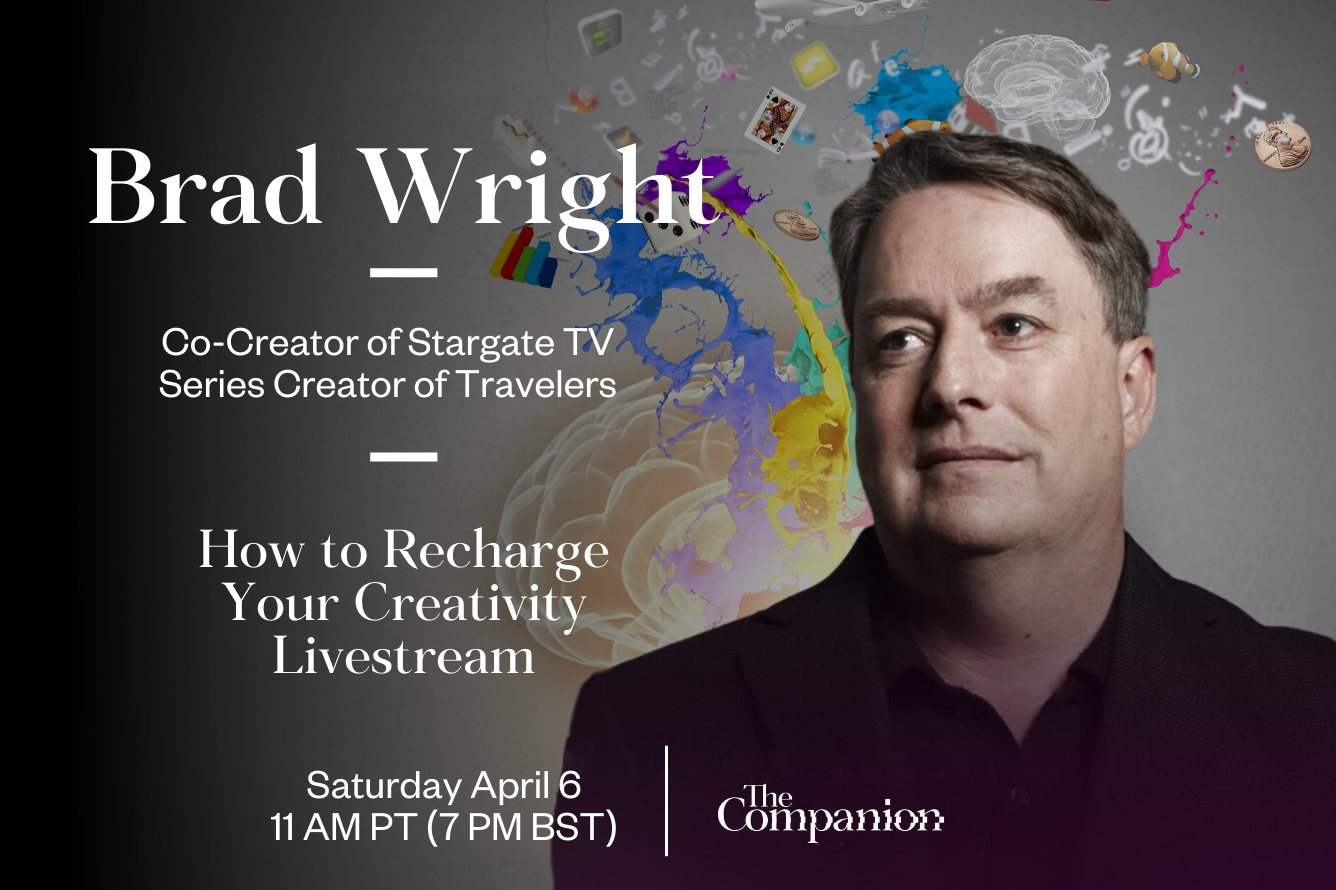Vitz is best known for his work at animation studio Kleiser-Walczak Construction Co, where – alongside CGI Fridays host Ed Kramer and previous guest Jeff Kleiser – he contributed to the visual effects of the late Doug Trumbull’s multimedia Luxor Las Vegas attraction, and its spiritual successor, Roland Emmerich’s ancient astronaut action movie and accidental franchise-starter, Stargate (1994).
His association with Kleiser goes back further than the company when by eerie coincidence, Vitz – then working for Robert Abel and Associates – found himself at ground zero for the birth of modern CGI: 1982’s Tron.
“Richard Taylor was a former art director at Robert Abel and Associates, and he was always known for doing really crazy stuff, pushing the technology to the limit. I think he worked on some of the 7up commercials and things like that. Unbeknownst to us – unbeknownst to me anyway, because I’d only been there at Abels for a few years – he came back with this project called Tron.
“It was [director Steven] Lisberger’s idea of a world inside the computer, most people were afraid to do it because they thought that it was too wild and too crazy. Kenny Miman and I said, ‘I’ll do that! I would love to work on that!”
Tron’s Neon Skyline and Flynn’s Transformation
“We had no idea what we were getting into,” Vitz says in CGI Fridays Episode 3. “But we went into it. While they were still in the process of selling the movie, we did a trailer or a teaser for it, which had the City of Lights using the Evans & Sutherland picture system. The idea would be that you’d see what looked like a city at night – flying over like Los Angeles at night – and then it would transition into circuitry with electrons flowing along the streets and you’d go on into the game world. Richard Taylor loved it so much that it became the segue to us into doing something like that for the title sequence for Tron, which looks really primitive by today’s standards.”

Robert Abel and Associates also created what they called ‘Flynn’s Ride’ – the sequence where Kevin Flynn (Jeff Bridges) “gets digitized” and is “sucked into the computer and hauled through this kaleidoscopic digital world to land on the world of Tron.”
The sheer complexity of the effect, which like many in Tron, was well beyond the scope of processing power at the time, was achieved by combining the nascent computer imaging with more traditional animation techniques. Effectively, the computer-generated sequences were just another background to be passed in front of the camera in a manner that Walt himself would have recognized.
“We actually built a stable optical bench and use that to build our own film recorder with a flat CRT screen, because we had 6,000 by 6,000 addressable points, which is a lot of resolution, but it’s all just vectors. We wanted it to be stable enough that we could shoot a camera at it and shoot multiple passes. So [that] we wouldn’t be limited by how much data the system could show at once, so we came up with the idea of layering things. Some of those shots would take 24 hours or more in the darkened room with the film recorder, capturing pass after pass.
“The way we got the illusion of depth and solidity was by carrying bipack mattes – actual pieces of film – that [we] would hold out [to prevent] part of the film from being exposed by the light on the CRT screen, and we could create the sense of solidity and depth, and the camera would roll back and forth, back and forth, you know, and sometimes you’d have to go in there and change the filters, we’d have like a diffusion filter, or a little star filter, all these things.”
To their immense frustration, some light leakage appeared to be creeping into the sequence from outside, forcing Vitz to go into immediate lockdown to preserve this byzantine web of overlapping effects shots.
“I had to go into the room and we taped up the door so that no light could get in, and I had a couple of bottles of water and a pizza and stayed overnight. We didn’t want to take the chance of spurious light ruining the shot. Bleary-eyed 36 hours later, I came out and the shot was a hero.
“It turned out what we thought was a light leak was due to the film going through the camera: the main film and the matte film would be separated and then come back together as the bipack matte would push it past the gate of the camera, and that was creating static electricity and the static electricity that was causing flashing onto the film.
“The place where we changed the mattes most frequently was right when you went through the tunnel around the corner – they created these blue flashes. Kenny Mirman looked at it and goes: ‘You know what? Free animation – we’ll keep that effect.’”
The Stargate Opening CGI
Vitz served as visual effects supervisor for the Gate opening, which put him on set when the Gateroom scenes were being shot (“The Stargate was so impressive to see,” recalls Vitz. “It actually moved and rotated and everything.”) as well as deep behind the scenes. Forget Daniel Jackson, it was Frank Vitz who figured out how to open the Stargate.
“It was Roland Emmerich who had the idea that he wanted the surface of the Stargate – instead of being crackling energy or grid or anything like that – he wanted it to be something fluid and organic and dynamic. So he had the idea, ‘I want it to be like water, but we’ll turn it on its side. So to remind you of water, but it’ll then do things that water could never do.’ Jeff Okun was the visual effects supervisor for the whole movie and we got together and talked about that. And he goes, ‘Well, what do you think he means by that?’
“We wanted to make something new that reminded you of nothing you’ve never seen before, so [you] kind of have a mind-meltdown when you see it.
“The fluid simulation software at the time was very primitive. So I wrote a finite element model program that would take a mesh of points and compute the propagation of force through it over time, so you could emulate ripples. You couldn’t do a breaking wave or anything like that, but you could introduce a perturbation, and then the ripples would propagate out from that. If you could ray trace that” – modeling how the light acts on or interacts with a surface – “and get a reflection, it looks pretty amazing.
“The important thing was James Spader and Kurt Russell walking up toward this shimmering glowing surface and seeing themselves reflected in it as they touched it. The main gag was the fact that the live-action camera from the front was duplicated on the backside of the empty Stargate, with another camera at exactly the same distance away but a reflected angle, so it was seeing what you would see through looking out through the Stargate. Because of the accurate placement of the two cameras, the reflection worked – it was accurate. They had to be synchronized. We also put a laser, a little red laser light in the plane of the imaginary Stargate.
“You have to remember that Kurt Russell and James Spader were walking up to an empty Stargate – the only thing was there were there were a couple of grips shaking pieces of mylar with 10k lights shining on the rippling mylar to create this kind of flickering light on the actors face while they’re standing in awe of something that’s not even there.

“The laser beam created an invisible plane where the Stargate was. When James Spader reached his finger forward and touched it, we could see the little red line where his finger passed through the surface. We could take frame by frame the live-action plate of him and rotoscope away his finger as it passed into the nonexistent surface.”
Jeff Kleiser talks in his interview about the water tank experiments to create the kerthudge – experiments that Stargate SG-1’s own visual effects supervisor John Gajdecki recreated for the kawoosh, complete with the drenching of crew and kit that forms a rite of passage. Well, here’s another piece of highly technical terminology: Roland Emmerich, in a moment of peak-Germanness, referred to the whirlpool effect that followed the Gate’s explosive opening as “the strudel.” You’re welcome.
This is just a snippet of the topics covered by Frank Vitz and Ed Kramer in the latest episode of CGI Fridays, which you can either listen to on this page or download wherever you get your podcasts.
The pair also talk about the Lawmaster flying sequence in Judge Dredd (1995), Universal Studios’ Amazing Adventures of Spider-Man ride, Mystique’s otherworldly morphing effect in X-Men (2000), and then Vitz’s move into videogames at Electronic Arts, and his growing passion for virtual reality.
It’s a fitting destination for a career that began over the cabinets of Flynn’s Arcade, isn’t it?
This article was first published on July 1st, 2022, on the original Companion website.
The cost of your membership has allowed us to mentor new writers and allowed us to reflect the diversity of voices within fandom. None of this is possible without you. Thank you. 🙂










